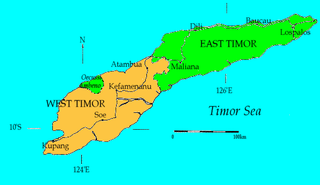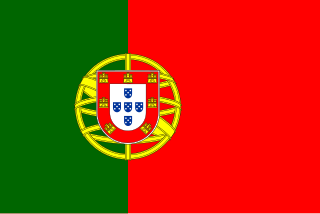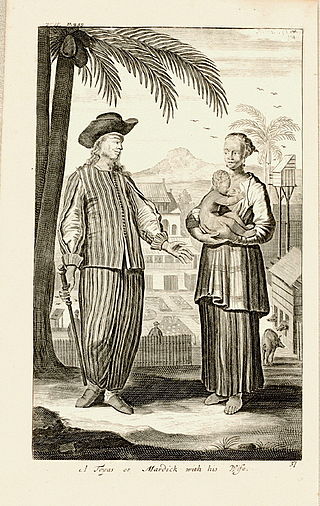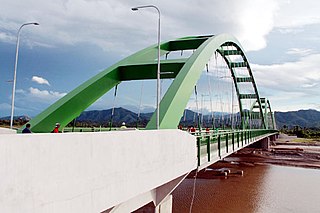
West Timor is an area covering the western part of the island of Timor, except for the district of Oecussi-Ambeno. Administratively, West Timor is part of East Nusa Tenggara Province, Indonesia. The capital as well as its main port is Kupang. During the colonial period, the area was named Dutch Timor and was a centre of Dutch loyalists during the Indonesian National Revolution (1945–1949). From 1949 to 1975 it was named Indonesian Timor.

Portuguese Timor was a colonial possession of Portugal that existed between 1702 and 1975. During most of this period, Portugal shared the island of Timor with the Dutch East Indies.

East Timor, officially the Democratic Republic of Timor-Leste, is a country in Southeast Asia and Oceania. The country comprises the eastern half of the island of Timor and the nearby islands of Atauro and Jaco. The first inhabitants are thought to be descendant of Australoid and Melanesian peoples. The Portuguese began to trade with Timor by the early 16th century and colonised it throughout the mid-century. Skirmishing with the Dutch in the region eventually resulted in an 1859 treaty for which Portugal ceded the western half of the island. Imperial Japan occupied East Timor during World War II, but Portugal resumed colonial authority after the Japanese surrender.

Pante Macassar is a city in the Pante Macassar administrative post on the north coast of East Timor, 152 kilometres or 94 miles to the west of Dili, the nation's capital. It has a population of 4,730. It is the capital of the Oecusse exclave.

The Bunak people are an ethnic group that live in the mountainous region of central Timor, split between the political boundary between West Timor, Indonesia, particularly in Lamaknen District and East Timor. Their language is one of those on Timor which is not an Austronesian language, but rather a Papuan language, belonging to the Trans–New Guinea linguistic family. They are surrounded by groups which speak Malayo-Polynesian languages, like the Atoni and the Tetum.

Larantuka is a kecamatan (district) and the seat of East Flores Regency, on the eastern end of Flores Island, East Nusa Tenggara, Indonesia. Like much of the region, Larantuka has a strong colonial Portuguese influence. The town covers a land area of 75.91 km2, and had 37,348 inhabitants at the 2010 census and 40,828 at the 2020 census; the official estimate as at mid 2023 was 41,642 - comprising 20,746 males and 20,896 females. This overwhelmingly (95.4%) Roman Catholic area enjoys some international renown for its Holy Week celebrations.

The Tono River is the principal river of Oecusse, an exclave of East Timor. The river and its major tributaries flow generally north, through the centre of the exclave, into the Savu Sea, reaching the sea near Lifau. Its alluvial flood plain in Pante Macassar administrative post is the main rice-producing place in Oecusse.

Topasses were a group of people led by the two powerful families – Da Costa and Hornay – that resided in Oecussi and Flores. The Da Costa families were descendants of Portuguese Jewish merchants and Hornay were Dutch.
Gaspar da Costa was the leader or tenente geral of the Portuguese-speaking Topasses, a Eurasian group that dominated much of the politics on Timor in the early modern period. He was largely responsible for the dramatic collapse of Portuguese power in West Timor, a process that laid the foundations for the modern division of Timor in an Indonesian and an independent part.
Amarasi was a traditional princedom in West Timor, in present-day Indonesia. It had an important role in the political history of Timor during the 17th and 18th century, being a client state of the Portuguese colonialists, and later subjected to the Netherlands East Indies.
Alas (East Timor) is a town in Alas Subdistrict. It is located in the interior of the island, 294 metres above sea level. As the crow flies, Alas is 56 km southeast of the state capital Dili und 7 km to the East of Same. Alas lies to the North of the Suco of Mahaquidan (Malaquidan, Malagidan), and the Alas suburbs of Uma Mean (Umanican, Umamean) and Beremanek are located in Mahaquidan. The suburbs of Lurin und Ailora are in the suco of Taitudac (Taitudak, Taitudac, Taitudal). It is located in the interior of the island, 294 metres above sea level. As the crow flies, Alas is 56 km southeast of the state capital Dili und 7 km to the East of Same. Alas lies to the North of the Suco of Mahaquidan (Malaquidan, Malagidan), and the Alas suburbs of Uma Mean (Umanican, Umamean) and Beremanek are located in Mahaquidan. The suburbs of Lurin und Ailora are in the suco of Taitudac (Taitudak, Taitudac, Taitudal). There is a medical station and a helicopter in Alas, as well as a primary school (Escola primaria Alas Vila) and a pre-secondary school.

Oecusse, also known as Oecusse-Ambeno and formerly just Ambeno, officially the Special Administrative Region Oecusse-Ambeno, is an exclave, municipality and the only special administrative region (SAR) of East Timor.

Bucoli is a suco (municipality) in Baucau Subdistrict, Baucau District, East Timor and also a settlement in the Bucoli Suco. As of 2010 there were 2179 inhabitants and 372 households in Bucoli Suco.

Cacavei is a village (suco) in East Timor. It is located in Lospalos sub-district and Lautem district. This village is in between Lospalos town and Iliomar sub-district.
Fohoren is a village and suco in the subdistrict of Fohorem, Cova Lima District, East Timor. According to the 2004 census, the suco of Fohoren has a population of 1,468 people. Its current chief is Agusto Cardoso.

The Noefefan Bridge is a two-lane road bridge over the Tono River in the suco of Lifau, a village in Oecusse, the East Timorese exclave on the north western coast of Timor. As of 2017, when the bridge was inaugurated, it was the largest bridge ever built in East Timor. It connects several isolated communities west of the river with Pante Macassar to its east.

The kingdom of Larantuka was a historical monarchy in present-day East Nusa Tenggara, Indonesia. It was one of the few, if not the only, indigenous Catholic polities in the territory of modern Indonesia. Acting as a tributary state of the Portuguese Crown, the Raja (King) of Larantuka controlled holdings on the islands of Flores, Solor, Adonara and Lembata. It was later purchased by Dutch East Indies from the Portuguese, prior to its annexation in 1904.
The Battle of Penfui took place on 9 November 1749 in the hillside of Penfui, near modern Kupang. A large Topass army was defeated by a numerically inferior Dutch East India Company force following the withdrawal of the former's Timorese allies from the battlefield, resulting in the death of the Topass leader Gaspar da Costa. Following the battle, both Topass and Portuguese influence on Timor declined, eventually leading to the formation of a boundary between Dutch and Portuguese Timor which precipitated into the modern border between West Timor and East Timor.

Fort Santo António de Lifau was a Portuguese fort once built by the mouth of the Tono River, in Lifau, district of Oecusse, in East-Timor, the first fort built by the Portuguese Crown, where only forts maintained by Dominican missionaries and Portuguese merchants previously existed.















